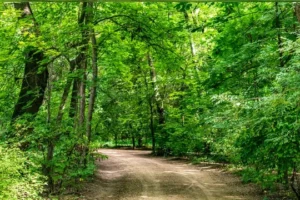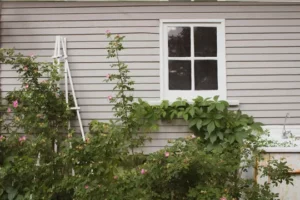How to tackle an overgrown garden? It is common question in every garden lover, is your once-beautiful garden now an unruly jungle of tangled plants and weeds? Don’t worry, you’re not alone. Many gardeners find themselves faced with an overgrown garden that seems daunting to tackle. However, with a clear plan and some dedicated effort, you can transform your neglected garden into a thriving oasis once again. It is help writing that we’ll guide you through the steps to reclaim your outdoor paradise and bring order back to your garden.
Assess the Situation
The first step is to assess the extent of overgrowth in your garden. Walk through the space and identify areas that need the most attention. Take note of which plants are thriving and which ones are struggling. This assessment will help you prioritize tasks and create a plan of action.

Gather Your Tools
Equipping yourself with the right tools is crucial for a successful garden makeover. Grab gloves, pruners, shears, a rake, a shovel, and any other tools you might need. Having the right tools will make the work more efficient and less strenuous.
Plan of Attack
Breaking down the process into manageable tasks will make the project less overwhelming. Start by clearing the pathways so you can move around easily. Trim and prune overgrown plants to promote healthy growth. Weed out unwanted plants to give your garden a clean slate.
Start with the Basics
Clearing the pathways is essential for both aesthetics and accessibility. Remove any debris, fallen branches, or accumulated leaves. This will create a neat and inviting space that serves as the foundation for your garden revival.
Trim and Prune
Shaping your plants through proper trimming and pruning is vital. Remove dead or diseased branches to enhance the plants’ health and appearance. Focus on maintaining the natural shape of each plant while eliminating excessive growth.
Weed Out the Weeds
Weeds can choke your garden and steal nutrients from desirable plants. Identify and remove weeds carefully to prevent them from regrowing. Use a weeding tool to ensure you get the entire root.
Rejuvenate the Soil
Prepare the soil for new growth by loosening it with a shovel or garden fork. Add compost to improve its structure and fertility. It is true, healthy soil provides a solid foundation, with good growth for plants to thrive.

Choosing New Plants
Select plants that are well-suited to your climate and garden conditions. Consider their growth habits, size, and maintenance need. Choosing native plants is an excellent decision because they have evolved to thrive in the local environment.
Planting Strategically
Place new plants in their designated spots, considering their sunlight and spacing needs. Water them adequately and add a layer of mulch to conserve moisture and suppress weed growth.
Mulching Matters
Mulching not only conserves moisture but also prevents weed growth and improves soil quality. Apply a layer of mulch around plants, but avoid piling it against stems.
Regular Maintenance
Prevent future overgrowth by committing to regular maintenance. Prune plants as needed, remove weeds promptly, and monitor for pests or diseases. Consistent care will keep your garden in top shape.
Involve the Family
Engaging in gardening as a family can bring joy and fulfillment. Get your loved ones involved in planting, weeding, and maintaining the garden. It’s a nice way to spend quality time together outdoors.
Embrace Patience
Gardens take time to flourish, so be patient. Your hard work will pay off as you watch your garden transform over the coming weeks and months.
Harvest and Enjoy
If you’ve planted edibles, the time will come to harvest your crops. Enjoy the literal fruits of your labor by indulging in fresh, homegrown produce.
Celebrate Your Success
As your garden blooms once again, take pride in your accomplishment. Share the transformation with friends and family, and inspire them to tackle their own garden challenges.
How do you describe an overgrown garden?
An overgrown garden presents a scene of nature reclaiming its space with exuberance. Once carefully cultivated paths now wind their way through a lush tangle of unruly foliage. Tall grasses, wildflowers, and vines flourish in abandon, their vibrant colors contrasting against the muted shades of neglected hardscape elements. Trees and shrubs stretch their limbs outward, reaching for sunlight and intertwining in a dance of uncontrolled growth.
The air is thick with the perfume of blooming flowers, mingling with the earthy aroma of damp soil and decaying leaves. Hidden corners and forgotten nooks are cloaked in a veil of greenery, where dappled sunlight filters through the canopy above. A sense of mystery and enchantment permeates the space, as each step reveals new pockets of life and beauty amidst the chaos.

Moss-covered statues and weathered benches stand as silent witnesses to the passage of time, now partially obscured by the rampant foliage. The symphony of buzzing insects, chirping birds, and rustling leaves creates a harmonious backdrop, further enhancing the untamed charm of the garden.
In this state of controlled chaos, the overgrown garden becomes a sanctuary for both nature and the imagination. It evokes a sense of nostalgia for a time when nature was left to follow its course, allowing a unique blend of wildness and serenity to coexist in one captivating tableau.
How can I clear my garden fast?
Clearing a garden quickly involves efficient planning, the right tools, and a systematic approach. Here’s a step-by-step guide to help you clear your garden rapidly:
Gather Equipment and Supplies
Collect the necessary tools and supplies such as gloves, pruners, loppers, rake, shovel, wheelbarrow, trash bags, and any specialized equipment like a chainsaw or brush cutter.
Plan the Process
Outline the areas you need to clear and prioritize tasks. Decide what you want to keep, remove, or relocate. Creating a plan will make the process more efficient.
Remove Debris
Start by picking up any loose debris like leaves, branches, and trash. Use a rake to gather and a wheelbarrow or trash bags to collect and dispose of the debris.
Prune and Trim Plants
Trim overgrown bushes, shrubs, and trees. Remove dead or diseased branches. This will not only clear the garden but also promote healthy growth.
Clear Weeds
Pull out weeds manually or use a weeding tool. If there are extensive weed overgrowth, consider using a hoe or a weed trimmer for speed.
Remove Unwanted Plants
If you have plants you want to remove entirely, dig them out from the root. Larger plants might require a shovel, while smaller ones can be easily uprooted by hand.
Clear the Ground
Use a shovel or a digging tool to remove unwanted grass, plants, or ground cover. This might involve digging up and removing the top layer of soil.
Dispose of Waste
Place green waste in compost piles, and bag non-compostable waste. If you have a lot of waste, consider renting a dumpster or arranging for a garden waste pickup service.
Consider Machinery
For larger areas or heavy-duty work, rent or use machinery like a mulcher, chipper, or brush cutter to speed up the process.
Relocate Plants
If you’re planning to replant some of the existing vegetation, carefully dig them out and temporarily relocate them while you clear the area. This way, you won’t lose valuable plants.
Prepare for New Plantings
Once the garden is cleared, you might need to add soil amendments, fertilizers, and other preparations for new plantings.
Replant and Mulch
Start planting the new vegetation according to your garden plan. Mulch the newly planted areas to help with moisture retention and weed control.
Clean Up
After all the work is done, clean and organize your tools and return any borrowed equipment.
Maintenance Plan
To prevent future overgrowth, establish a maintenance routine that involves regular weeding, pruning, and cleaning.
FAQs
How long does it usually take to revive an overgrown garden?
Reviving a garden’s appearance and health can take a few weeks to several months, depending on the initial condition and the effort invested.
Can I repurpose the plant debris I clear from the garden?
Absolutely! You can compost suitable plant material to create nutrient-rich soil for your garden.
What should I do if I’m unsure about plant identification during pruning?
If you’re uncertain about a plant, seek guidance from local gardening resources or consult with a knowledgeable gardener.
Are chemical weed killers recommended for tackling overgrown gardens?
It’s best to avoid chemical weed killers, especially if you plan to grow edibles. Opt for natural weed control methods to protect the environment and your plants.
How can I make gardening enjoyable for my children?
Engage children by letting them choose plants they like, involving them in small tasks, and turning gardening into a playful learning experience.
Final Thoughts
If you perfectly follow these process, I sure, you are not saying fourthly, that How to tackle an overgrown garden? Taming an overgrown garden may seem like a daunting task, but with determination and the right approach, it’s entirely achievable. By following these steps and investing your time and effort, you’ll witness your outdoor paradise reemerge from the wilds of neglect. Remember, gardening is a journey that requires patience, care and love.